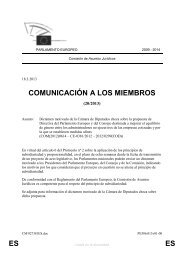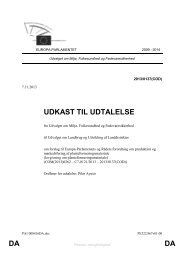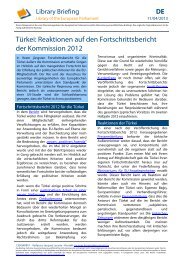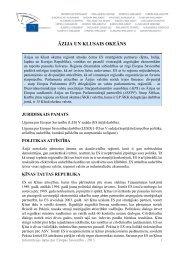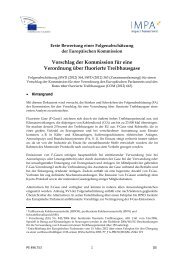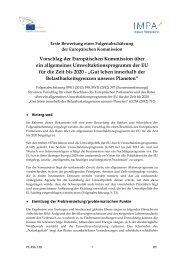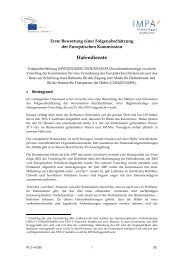language version - Europa
language version - Europa
language version - Europa
You also want an ePaper? Increase the reach of your titles
YUMPU automatically turns print PDFs into web optimized ePapers that Google loves.
14<br />
necessary synergies, for example between fleet management<br />
and conservation of resources.<br />
The new basic rules of the CFP have been in force since<br />
1 January 2003. Its main themes are as follows:<br />
CONSERVATION OF RESOURCES<br />
The CFP provides for certain restrictions on access to waters<br />
and resources. For example, a restricted zone is in force until<br />
2012, restricting access to the 12-mile zone to fishing vessels<br />
that traditionally fish in those waters. There are other examples<br />
of restricted access, such as the Shetland Box. The principle<br />
of relative stability, which governs access to resources<br />
and is based on the allocation to each Member State of a fixed<br />
percentage of catches for each stock, has been retained.<br />
The CFP is far from having achieved the results anticipated in<br />
terms of resource conservation. Thirty per cent of stocks are<br />
currently below biological safety limits, and in the case of 80%<br />
of stocks the sector’s yield is falling as a result of overfishing.<br />
The 2002 reform was aimed at gradually implementing fisheries<br />
management based on ecosystems. It adopted a longterm<br />
vision with its implementation of multiannual plans<br />
for attaining and/or maintaining safe stock levels. However,<br />
deployment of the ecosystem-based approach comes up<br />
against institutionalised decisions on the allocation of TACs<br />
and quotas in the Council and, sometimes, against a lack of<br />
the scientific knowledge needed to enable it to be applied.<br />
The main conservation measures were more traditional, specifying<br />
total allowable catches (TACs), a restriction on fishing<br />
effort and technical measures (fishing gear and minimum<br />
landing sizes). They also impose an obligation to record and<br />
notify catches and landings.




